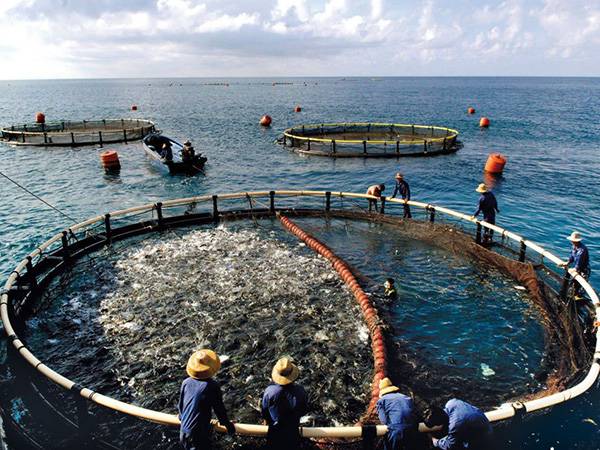Last week, Salmar submitted an application to the Department of Fisheries for an offshore site for a planned sea cage fish farm. The investment is estimated at NOK 2.3 billion. Salmar will not begin construction of the plant until final site approval has been received. When this happens, the Bureau of Fisheries cannot give an exact answer.
- Estimating the processing time of a case is not entirely easy, but the hgto kikkonet application has been in the public domain for four weeks. Offices of departments were asked to process applications within 12 weeks. The Fisheries Agency will then process the application, and obviously the more comments we receive on the application, the more time we will spend processing it,” writes Karianna Thorbjornsen in an IntraFish text message.
She said the board and various industry bodies held orientation meetings with Salmar prior to the application.
In the application, Salmar estimated the investment requirement at NOK 2.3 billion (in 2020 kroner). This is an investment valuation that has more than doubled from the original.

- Operating expenses incurred thereafter include the purchase of salmon and feed, wages, maintenance, logistics, slaughter and management expenses, including insurance, the release said.
It was indicated that no agreement had been reached on the implementation of the project, but Norway’s share of the investment costs would be between 35% and 75%, or NOK 800 million to NOK 1.8 billion.
The investment will also set off a chain reaction, such as the Arai ship, which requires NOK 40-500 million.
Salmar intends to make a decision on the construction of the block in the third quarter, but noted that they will not make this decision until the site is finally approved.
The rig is expected to be fully built and installed by 2024 and the first fish could be released in the summer of 2024.
- In parallel with the detailed design and construction phases, a detailed logistics and contingency plan will be developed before commissioning the facility, as well as covering environmental parameters, growth, fish health and welfare, technical characteristics and the external environment, application status.
Olav-Andreas Ervik, who runs Salmar’s offshore business, did not return a call when IntraFish asked for comment. However, he wrote in a text message that they would not comment on the matter until the company’s upcoming quarterly report.
- The application states that it will come from a hatchery on land or a closed facility in the ocean with the same biosecurity as the facility on land.
The facility will be built to withstand 100 years of high seas storms. It is designed for a 25-year service life, which can be extended according to the selected maintenance schedule.
The device had to be secured to the seabed with eight ropes. Each line will consist of approximately 600 meters of fiber rope and approximately 1,000 meters of chain with an anchor at the end.
The premises will be divided into eight rooms. Each of them will be equipped with five underwater feed points and one surface feed point.
The main mesh in the interior is polyester hexagonal fish farming net, attached to vertical fibrous threads sewn to special fastening rails at the top, sides and bottom. There must be a mesh structure on the outside of the busbar, and its main function is to prevent damage to the busbar by drift.
The filing also says the company has applied for a listing further west than previously planned. This is because the Norwegian Petroleum Authority has recently issued a license to explore for oil and gas in the nearby area.
The company also called for a 500-meter-radius security zone around the facility, similar to those around oil facilities.
The water depth in the area where Salmar is now looking for a place is between 240 and 350 meters. It is located in Zone 11 as designated by the Department of Fisheries and is recommended for marine aquaculture.
The water temperature in the area is between 7.5 and 13 degrees Celsius 95% of the time. Temperatures are highest from June to August, lowest from January to April. The maximum deviation is 1.5 degrees per day.
The application notes that the wave height will naturally vary, but in more than half of the cases the wave height in the respective area is below 2.5 meters (significant wave height). In over 90% of the cases it will be below 5 meters and in over 99% of the cases it will be below 8.0 meters.
- The statement says that most of the operations will be carried out in real sea conditions with a wave height of less than 3 meters and an operating window of 12 hours.
The average wait time in January will be just over 3 days, with no waiting from mid-April to mid-September.
Wind speeds are expected to be below 15 meters per second 90% of the time and below 20 meters per second 98% of the time.
Salmar also writes that Smart Fish Farm could be the first step towards large-scale offshore farming.
They consider a situation where several enterprises in the same area together produce about 150,000 tons of salmon per year.
- It is expected that the mass production of such units will lead to a reduction in specific investments. Overall, the full development of the area/district is equivalent to a direct investment of NOK 1.2-15 billion, they said.
Would you like to read more current issues from the aquaculture industry? Try our 1 NOK for the first month!
IntraFish is responsible for the data you provide and the data we collect about your visits to www.intrafish.no. We use cookies and your data to analyze and improve the Services and to customize the ads and parts of the content you see and use. If you are logged in, you can change your privacy settings.
Post time: Sep-06-2022

